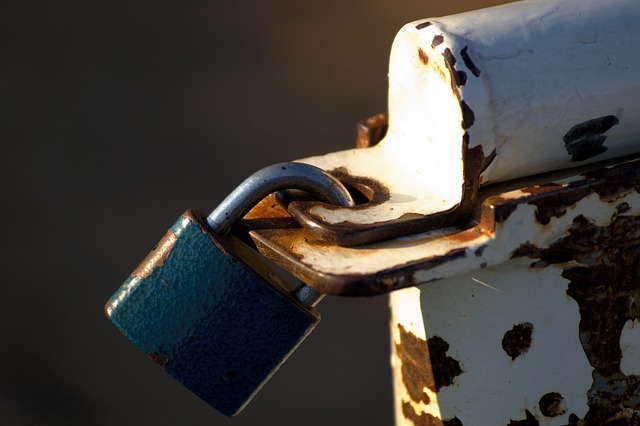Business Property Insurance is a crucial safety measure for enterprises, offering comprehensive protection against unforeseen financial losses. It covers physical assets like buildings, equipment, and inventory from damages or thefts caused by various perils, including fires, storms, vandalism, and natural disasters. Adequate coverage ensures businesses can recover swiftly and maintain operations during disruptions. Risks should be assessed regularly to tailor policies that align with evolving business needs. Understanding policy features and exclusions is key; specialized coverages may be needed for high-value items or unique risks. Location influences insurance requirements, as do building types, impacting costs and risk levels. Property Insurance is a strategic necessity, transforming businesses' resilience against physical and digital threats globally, as demonstrated by case studies. A dual approach of protection and loss prevention through proactive strategies enhances financial security for business owners.
In today’s unpredictable business landscape, safeguarding your assets is paramount. Understanding Property Insurance is the first step towards mitigating risks and ensuring resilience. This comprehensive guide delves into the intricacies of Property Insurance, equipping entrepreneurs with knowledge to navigate potential challenges. From comprehending coverage to assessing risk factors and navigating policy nuances, we explore essential elements for business survival. Discover how different property damage scenarios impact operations and learn from real-world case studies, offering valuable insights for maximizing protection and minimizing losses.
Understanding Business Property Insurance: What It Covers

Business Property Insurance is a crucial safety net for any enterprise, safeguarding against potential financial losses due to unforeseen events. This type of insurance offers comprehensive coverage for your business’s physical assets, including buildings, equipment, and inventory. In the event of damage or theft, it can help replace or repair these items, ensuring your business can continue operations without significant setbacks.
The scope of Property Insurance is wide-ranging. It typically includes protection against perils like fire, storms, vandalism, and natural disasters, among others. Some policies even extend coverage to business interruption, providing financial support during periods when your operation is halted due to insured events. Understanding what’s covered is key to ensuring your business is adequately protected, giving you peace of mind as you navigate the challenges of running a successful enterprise.
Different Types of Property Damage and Their Impact on Businesses

Business property protection is a critical aspect often overlooked until it’s too late. Understanding different types of property damage and their impact is essential for any business owner looking to safeguard their investment. Damage can range from natural disasters like fires, floods, and storms, to man-made incidents such as vandalism, theft, or accidental damage. Each type carries its own unique challenges and financial implications.
For instance, a fire not only destroys physical assets but also disrupts operations and may lead to prolonged closure. Floods can cause extensive water damage, compromising the integrity of buildings and equipment. Vandals can disrupt business continuity by damaging property and disrupting services. Property insurance plays a pivotal role in mitigating these risks by providing financial coverage for repairs or replacements, ensuring businesses can bounce back faster and continue their operations without significant interruptions.
How to Assess Your Business's Risk for Optimal Coverage

Assessing your business’s risk is a crucial step in determining the optimal property insurance coverage for your needs. Start by conducting a thorough audit of your facility, inventory, and operations. Identify potential hazards like fire, theft, natural disasters, or equipment malfunctions, and evaluate their likelihood and impact. Consider factors such as location, industry regulations, and the value of your assets. A detailed risk assessment will help you understand which perils require coverage, enabling you to customize your policy accordingly.
Next, analyze your business’s continuity plans and emergency procedures. Assess how quickly you can recover from disruptions and what resources are essential for operations. This understanding will guide your decision on limits of liability, deductibles, and additional coverages. Regularly review and update your risk assessment as your business evolves, ensuring that your property insurance keeps pace with changing circumstances.
Essential Features and Exclusions in a Property Insurance Policy

When considering business property protection through insurance, understanding the policy’s features and exclusions is paramount. A comprehensive Property Insurance policy should include essential coverage for physical assets like buildings, equipment, inventory, and valuable papers against risks such as fire, theft, vandalism, and natural disasters. It also typically offers liability protection, shielding businesses from claims of bodily injury or property damage to others.
However, policies may exclude certain events like war, terrorism, or environmental hazards without additional riders. Additionally, personal property of employees, ordinary wear and tear, and pre-existing conditions might not be covered. Business owners should carefully review these exclusions to ensure their specific needs are addressed and consider adding specialized coverage for high-value items or specific business risks.
The Role of Location and Building Type in Property Insurance

The role of location is paramount in determining the risks associated with a property, and thus, its insurance needs. Properties located in areas prone to natural disasters like floods, hurricanes, or earthquakes often require specialized coverage. For instance, businesses in coastal regions might face higher premiums due to the increased risk of storm surges. Conversely, urban centers may experience more frequent theft or vandalism, necessitating additional safeguards in their property insurance policies.
Building type also significantly influences insurance requirements. A historic structure with unique architectural features might attract higher insurance costs due to its value and potential for specialized restoration needs. On the other hand, modern glass facades in skyscrapers could be more susceptible to wind damage, reflecting in elevated insurance premiums. Understanding these factors is crucial when tailoring property insurance policies to protect businesses’ assets effectively.
Case Studies: Real-World Examples of Successful Property Insurance Claims

In a dynamic business landscape, having the right property insurance is not just an option—it’s a lifeline. Case studies from around the globe offer compelling examples of how effective property insurance has protected businesses against unforeseen circumstances. For instance, in 2017, a small manufacturing unit in Texas suffered extensive damage due to a severe storm. Thanks to comprehensive property insurance, they were able to swiftly rebuild their facilities, minimizing downtime and financial loss. This real-world example underscores the significance of having robust coverage in place to safeguard against natural disasters.
Another case involves a retail store in Europe that experienced a ransomware attack, encrypting all its data and bringing operations to a halt. Their property insurance policy included cyber liability coverage, enabling them to recover lost data, restore operations, and even compensate customers for any financial losses incurred during the incident. This demonstrates how tailored property insurance policies can mitigate not just physical damage but also digital threats, providing businesses with comprehensive protection in today’s interconnected world.
Tips for Business Owners: Maximizing Protection and Minimizing Losses

For business owners, maximizing protection and minimizing losses go hand in hand. A robust property insurance policy is non-negotiable, acting as a financial safeguard against unforeseen events like natural disasters, theft, or damage. Beyond insurance, proactive measures can significantly enhance security. Regularly reviewing and updating your risk assessment, implementing robust access controls, and training employees on safety protocols are strategic steps to mitigate potential losses.
Additionally, staying informed about industry-specific risks and keeping business operations up-to-date with the latest security standards contribute to a comprehensive loss prevention strategy. By combining adequate insurance coverage with proactive security measures, business owners can navigate challenges with confidence, ensuring their assets and interests remain protected.
